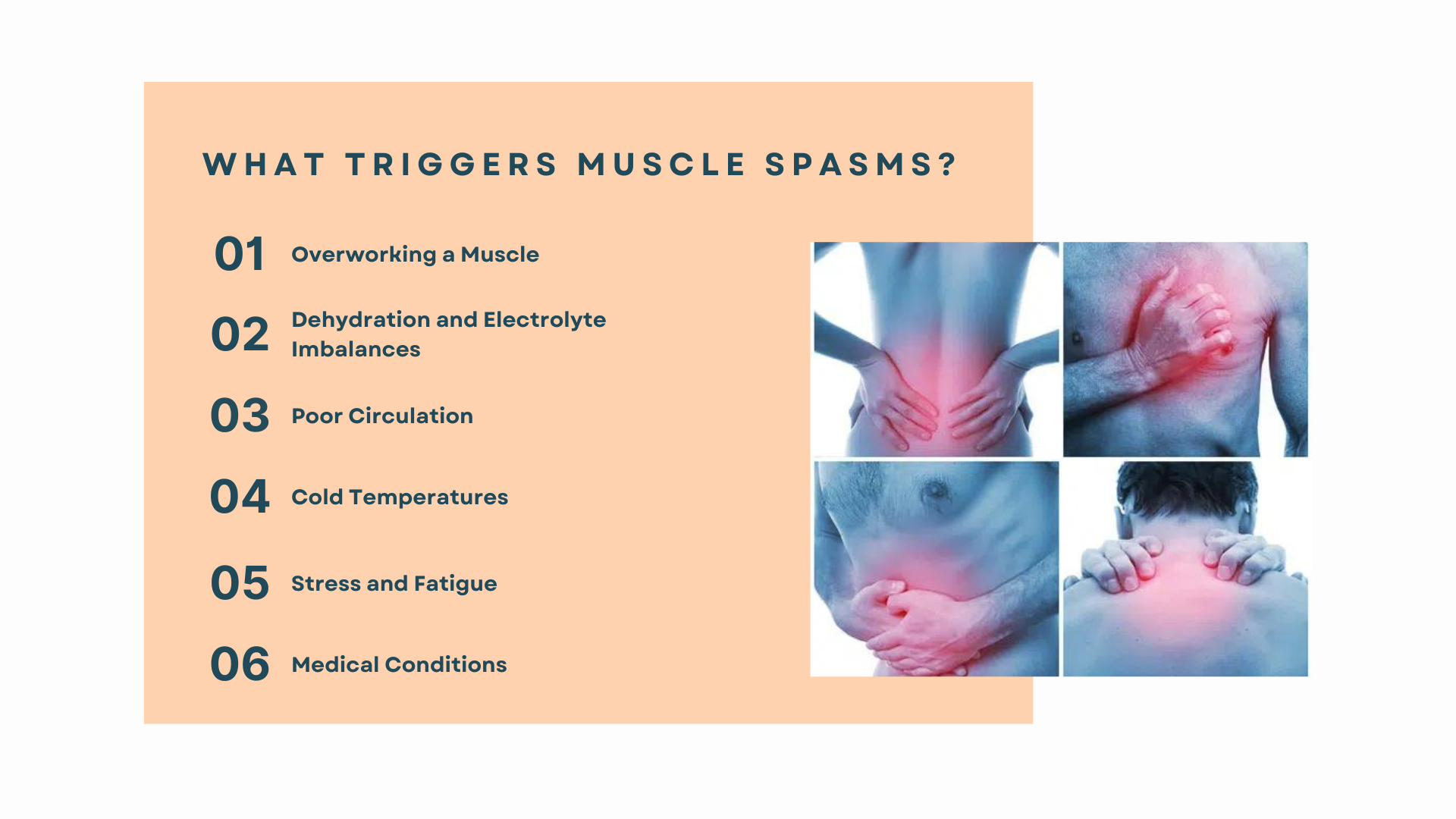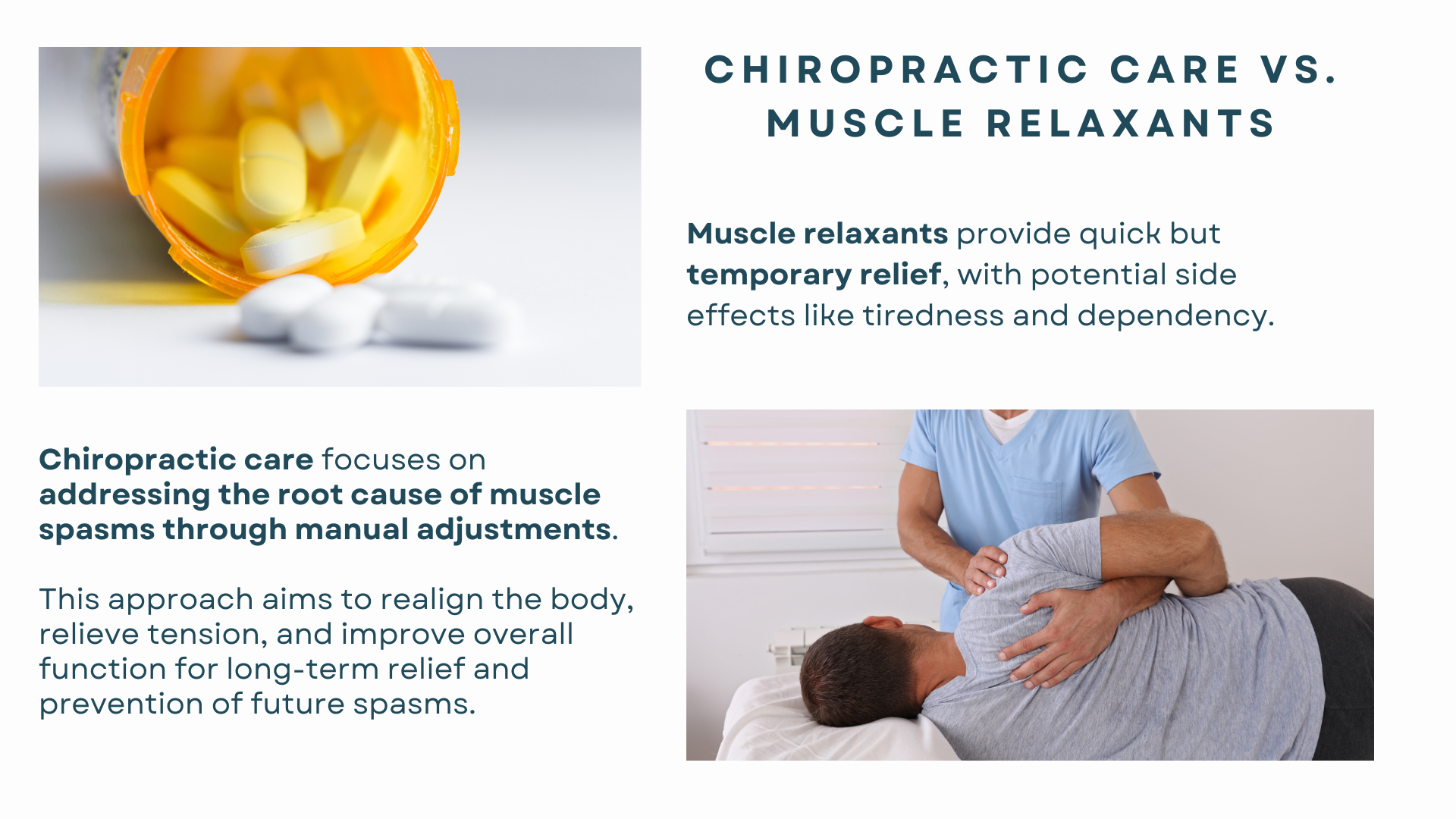Muscle spasms are painful and sometimes debilitating. They strike unexpectedly and cause significant discomfort and disruption to daily life.
These involuntary muscle contractions are not only uncomfortable but can also be a symptom of underlying health issues, ranging from simple electrolyte imbalances to severe medical conditions.
Given their impact, finding effective and lasting treatments is crucial for those affected.
What Is a Muscle Spasm?
Simply put, muscle spasms occur when your muscles tighten on their own—without a heads-up or warning. It’s like your muscle decides to throw a little fit, squeezing itself into a tight knot.
This can hit you with sharp and intense pain, even if you’re in the middle of something important. Sometimes, it sticks around for a moment, but other times, it doesn’t want to let go.
Muscle spasms may occur anywhere in your body, primarily in your back, neck, legs, and feet.
So next time your muscle gives you that unwelcome pinch, you’ll know—it’s a spasm doing its thing!
What Triggers Muscle Spasms?

- Overworking a Muscle: Pushing your muscles beyond their comfort zone, like during an intense workout or heavy lifting, can cause spasms.
- Dehydration and Electrolyte Imbalances: When you’re not drinking enough water, or your body lacks essential minerals like potassium, calcium, and magnesium, your muscles can tighten up unexpectedly.
- Poor Circulation: Restricted blood flow can lead to cramping and spasms. This might happen when sitting or standing in one position for too long.
- Cold Temperatures: Muscles can respond to cold by tightening. This natural reaction to conserve heat can result in spasms, particularly in colder environments.
- Stress and Fatigue: Emotional and physical fatigue can also trigger muscle spasms. When you’re stressed or tired, your body’s ability to relax muscles effectively is compromised.
- Medical Conditions: Certain medical conditions, such as nerve disorders, diabetes, thyroid issues, and kidney diseases, increase the likelihood of experiencing muscle spasms.
How Do Painful Muscle Spasms Affect Daily Life?
Imagine trying to get a good night’s sleep, but there’s a sudden cramp that feels like it’s twisting your muscles into knots—goodbye, restful night!
And it doesn’t stop there. If you don’t get those spasms checked out, they might stick around long enough to evolve into chronic pain, which is not something you want to happen repeatedly.
On top of the physical annoyance, the constant discomfort can start messing with your head, too, cranking up your stress and anxiety levels.
So, dealing with muscle spasms isn’t just about soothing a sore spot—it’s about preventing your whole life from being disrupted.
How Do Chiropractors Treat Muscle Spasms?
Chiropractors use a mix of techniques to get to the root of the problem.
They start with spinal manipulation, which is like realigning the gears in your back to ensure smooth operation.
They also incorporate massage therapy to soothe those tight muscles and stretching exercises to keep things limber.
These treatments aren’t just about putting a band-aid on the pain; they’re about getting your spine lined up just right, boosting blood flow, and easing muscle tension. This way, they tackle both the immediate pain of a spasm and the underlying issues that caused it to occur.
These adjustments can also enhance nerve function. Nerve function can be compromised during a spasm, leading to severe pain and discomfort.
Chiropractic Care vs. Muscle Relaxants

While muscle relaxants are a go-to for quick relief, they tend to mask the pain temporarily. Plus, they come with their fair share of drawbacks, like making you tired or even leading to dependency if you’re not careful.
Conversely, chiropractic care offers a more solid, long-term solution. Chiropractors get down to the nitty-gritty of the problem, tackling the root cause of muscle spasms rather than just the symptoms. They do this without medications, focusing on manual adjustments that realign your body, relieve built-up tension, and enhance overall function.
The chiropractic route helps alleviate the current spasm and prevents future occurrences by ensuring your body’s mechanical structure is tip-top!
What Are the Risks of Using Muscle Relaxants?
Muscle relaxants are often prescribed to ease muscle spasm pain, and they work well for quick relief.
Strong muscle relaxants, however, can knock you out. They tend to make you drowsy or sleepy. Dizziness is another common side effect, which can be a real hassle, making you feel off-balance.
The more you use muscle relaxants, the more your body gets used to them, and soon, you might find you need more of them to get the same relief. Breaking this cycle can be challenging if it gets to that point.
Another long-term concern is your liver health. Since your liver has to process these drugs, overdoing it with muscle relaxants can strain or even damage this vital organ.
Chiropractic Care Provides a Holistic Approach to Treating Muscle Spasms
Chiropractic care offers a holistic approach by addressing pain and enhancing overall health and well-being. This includes nutritional counseling, lifestyle advice, and exercises that improve muscle strength and flexibility.
What Chiropractic Exercises Help Prevent Muscle Spasms?

Chiropractors recommend specific exercises that enhance spinal health, increase muscle strength, and improve flexibility.
These may include stretching routines, core strengthening exercises, and yoga. Regular practice of these exercises will significantly reduce the frequency of muscle spasms.
What Lifestyle Changes Can Aid in Managing Painful Muscle Spasms?
Lifestyle changes such as maintaining proper hydration, ensuring adequate intake of minerals like magnesium and potassium, and adopting proper posture during physical activities can greatly help manage muscle spasms. Regular physical activity and stress management techniques like meditation can also be beneficial.
Experience Relief from Painful Muscle Spasms with Chiropractic Care in New Jersey!
At Bergen Chiropractic and Sports Rehabilitation Center, our chiropractic team, led by Dr. Gregory Doerr, adheres to the highest medical standards to provide superior chiropractic care. Our mission is to provide unparalleled patient care in a comfortable, healing atmosphere.
Access our contact form or call us at (201) 945-4075 to learn more about our chiropractic care services! Our offices at 532 Anderson Avenue, Cliffside Park, NJ 07010, and 62 Summit Ave, Hackensack, NJ 07601, are ready to welcome you as we proudly serve the areas of New York, New Jersey, Philadelphia, PA, and Baltimore, MD. Also, access our blog, Facebook, and Instagram pages for more information on chiropractic care for muscle spasms!








